When you think of a roux, you might first think of Cajun food with rich gumbos and jambalayas. It is an essential part of the Creole cuisine but have been used by cooks across the world for centuries as the foundation of endless dishes. Making a roux is a basic technique that will increase your understanding of cooking and elevate your sauces for decades to come!
Let’s get started!
This post is part of our Basic Cooking Skills series. Each week we will be doing a deep-dive into one basic cooking skill and a brand new recipe to accompany it to practice that newfound skill. Check back throughout the series for updates and new posts.
Please note this post contains affiliate links, which means I receive a small commission, at no extra cost to you, if you make a purchase using the links. Please see my disclosure for more details.

What is a roux?
A roux (pronounced “ru-”) is a base for sauces and soups that works as a thickening agent. When heated it thickens your creamy Italian sauces and keeps your dinner gravies from getting clumpy.
Compared to a slurry of cornstarch, rouxs are more flavorful, smooth, and naturally enhance the flavor of the liquids.
Equal parts flour and fat (usually butter) come together to form this simple thickener.
As roux cook longer they develop a darker color and deeper flavor. There are unique ways to use the 3 standards types, and each is a little different than the others.
how to make a roux
It could not be easier to whip up an amazing roux. Don’t blink or you’ll miss it!
- Heat butter (or another fat) and whisk in equal parts flour. Stir until smooth. Cook for a few minutes until the desired color is achieved.
Typically the rule of thumb for a creamy sauce is 1 cup of liquid = 2 tbsp butter & 2 tbsp milk. For a thinner sauce, use less; for a thicker sauce, use more.
incorporating roux into a sauce
Once your roux has formed and has finished cooking, you can continue creating your sauce or gravy.
Slowly mix in the liquid for your sauce, most often chicken broth or cream.
If the liquid in your dish is hot and already prepared, room temperature roux can be added into the liquid, stirring vigorously. If your liquid is cold, such as broth from the fridge, the liquid should be added into the hot roux, stirring vigorously.
Stir frequently to break it down into the liquid and combine.
Don’t worry if you need to make adjustments as you go. If your sauce is too thick like a paste, add more liquid. If your sauce is too thin like water, cook in more roux.
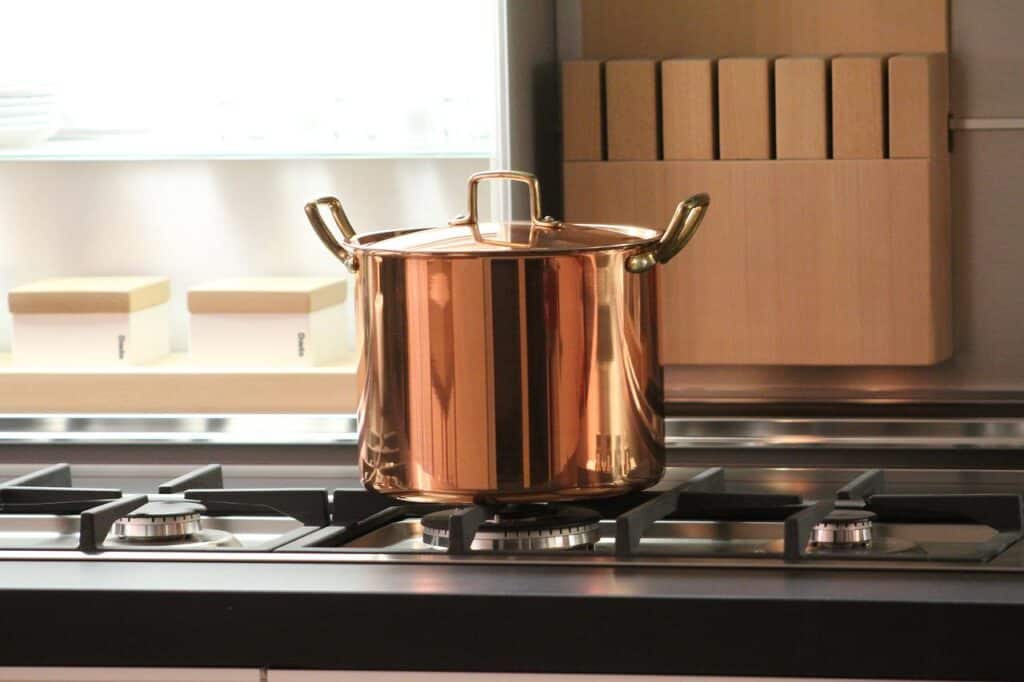
3 types of roux and when to use them
White
- The lightest of the rouxs, cooked for 1-2 minutes
- The most commonly used
- Thickens the most
- Uses:
- Bechamel sauce
- Alfredo sauce
- Cheese Sauce
Blond
- Cooked for 5-10 minutes
- Slightly caramelized and is a deeper brown
- Nuttier flavor
- Uses:
- Veloute and stock-based sauces
- Gravy
- Soup
Brown
- Cooks up to 30 minutes, until almost burnt. So be careful!
- Very dark in color
- Lots of rich nutty flavor
- Uses
- Espagnole sauce
- Gumbo and other Cajun dishes
Materials Needed
quick takeaways
- Roux is a natural thickener for sauces and gravies that enhances flavor
- Equal parts butter and flour
- 1 cup of liquid = 2 tbsp butter + 2 tbsp flour
- Easily adjust thickness by adding more roux (thicker) or more liquid (thinner)
- Increasing cooking time to create a blond or brown type
- Use the 3 different types for unique sauces
Pin me!

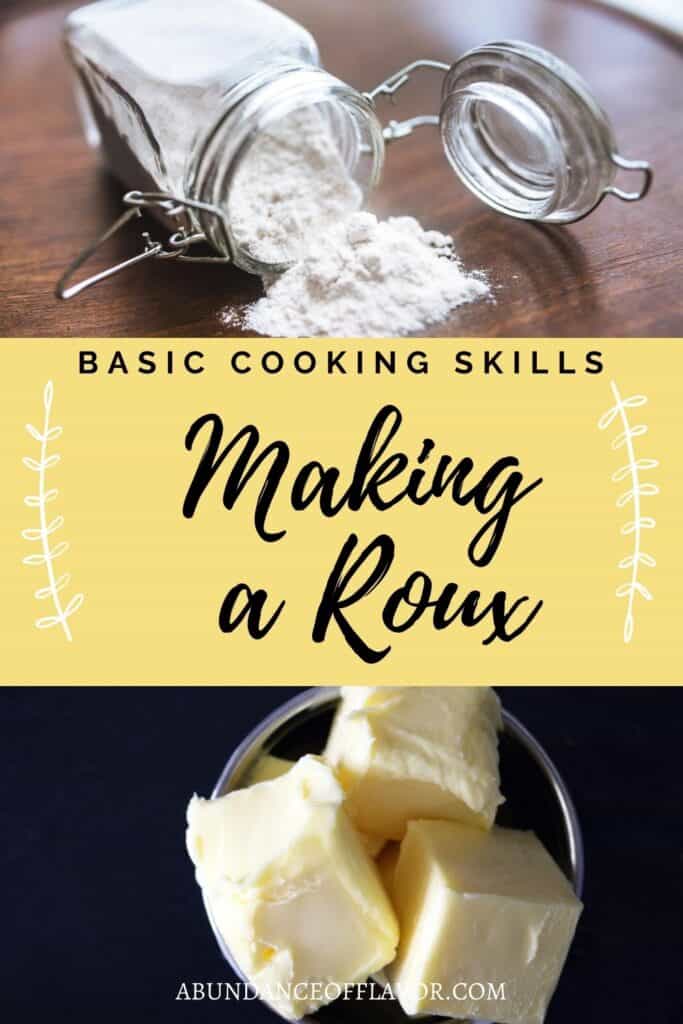

Implement Your New Skill
Now that you know how to make a solid roux, there are no limits to what sauce you can make! Have some fun experimenting in the kitchen with different sauces, gravies, soups and more as you master the 3 different rouxs.
This Thursday check back in for a SUPER easy cream sauce recipe using a white roux! Can’t wait to share it with you 🙂
**UPDATE: Check out this easy cheesy cream sauce recipe to test out your roux skills!



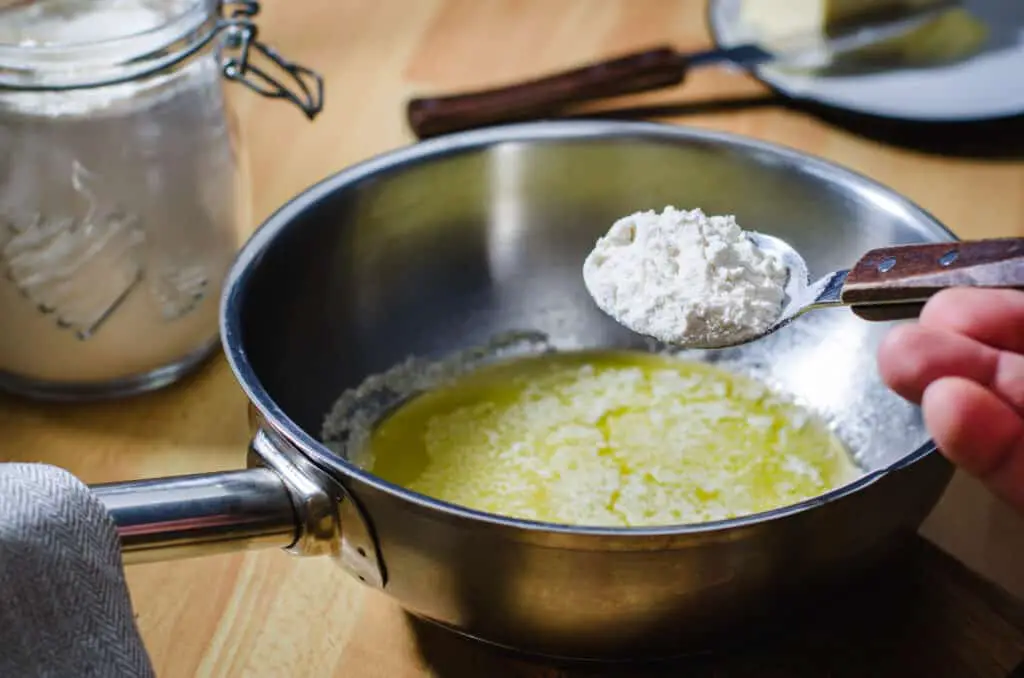
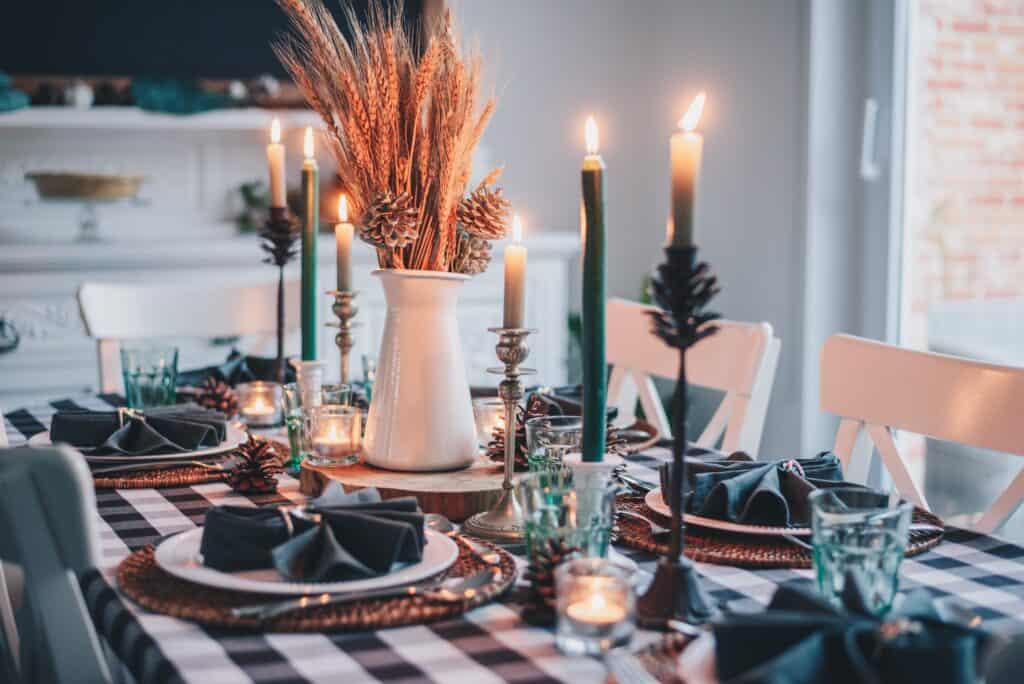
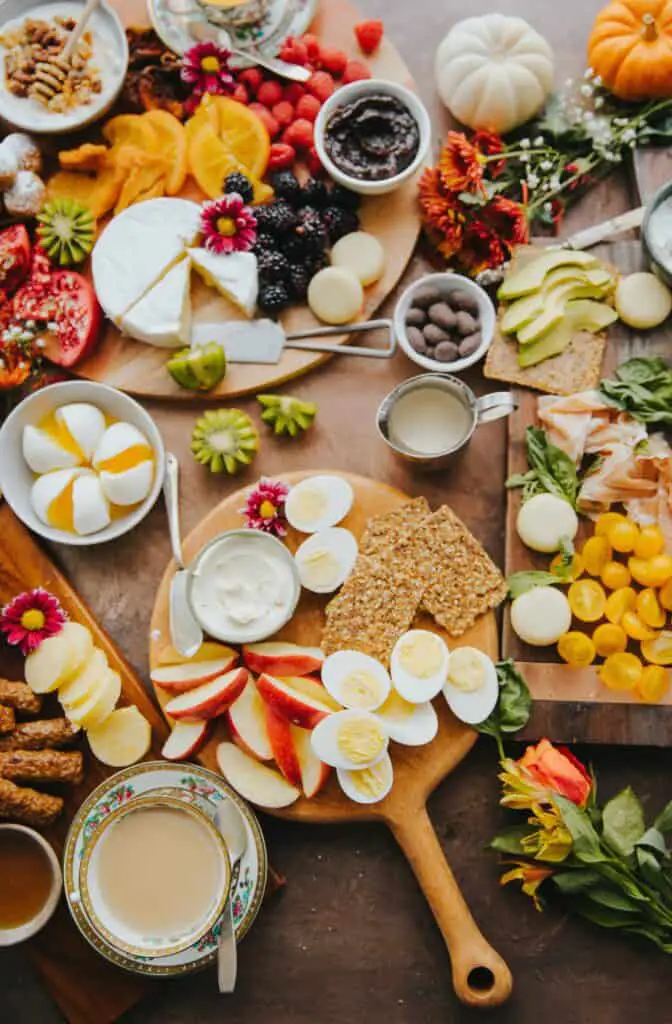

HA! This would have been very handy the other night when I made a complete mess of my roux… but now I know what to do, thanks!
Ahh now you have a reference for the future!! I’ve messed up many a roux before actually taking the time to learn about it 🙂
My mouth is watering 😂😂
Thanks for sharing…. 💓💓
Thanks so much for reading!
Amazing info, I only knew about the first roux, the blond for the likes of bechamel sauce and cheese sauces.
Will definitely be giving it a go for sauces, gone will the days of gravys and sauces lumpy with flour.
Exactly, I feel the same!! I can’t wait for colder days and try out rouxs for lots of soup and gravy!
I have always wondered how to get the sauces thickened naturally
I hope this was helpful 🙂 Thank you!
I have always wondered how to get the sauces thickened naturally. This was a really useful post. Thanks.
Thank you!!
Great information! I cook and know what a roux is but honestly had no idea about blond or brown. Probably because most of the recipes I make or use have more of a white roux. Thank you for sharing!!
I was the same! I had never used darker rouxs before but will have to try it in a Cajun dish 🙂
Gosh, I didn’t even know what a roux was before reading this! Shows how much I know about cooking haha! This is really helpful 🙂
Haha a roux is like the hidden gem of cooking! Thanks for reading
Pinned for later! I’ve never made roux but definitely wanna try now.
I hope it turns out great for you! Thanks for checking it out 🙂
Great tips and a tasty post ;P
Good job!
Thanks so much!
I only recently learned how to make a roux, and it has transformed the way I cook. I use it for my favorite dinner: beef tips and egg noodles! This post was so informative and helpful 🙂
Yum that sounds like such a good meal!! Thanks for sharing!
I needed this the other week when I tried to make a gumbo and the roux baffled me 😂 thanks for sharing, I’ll be sure to use next time!
Haha well I’m glad you’ll have it for next time!! I have not tried a dark roux for gumbo but have it on my list!
This is a really helpful post. I didn’t even know what a roux was before this.
Great, I’m glad it was helpful!
Perfect I love this explanation so simple but at the same time so complete, I will soon try to use your tricks to make my roux
Thanks so much, I hope it’s easy enough 🙂
Besides learning a new recipe, I also learned something from reading this post. This is the first time I heard of roux. Thank you for opening my world.
That’s great to hear! Thank you for reading!
Never knew there is another thickening ingredient aside from cornstarch. Great to learn something new! Thanks for this 🙂
Yay I’m glad you learned something new 🙂
When I thoughts of roux my only thought was, “what’s a roux?” Ha ha ha. I had no idea is was a thickening agent for stuff like sauces, and I really hate a runny sauce. You end up with food items with no sauce favour on it, so I’m going to have to try this out
Haha it’s really not a term used a bunch so I’m glad I could shed some light on it! It’s a true game changer for lovely sauces
So that’s what the clever ingredient is then, I’ve never come across it before. It looks so easy to make as well, I do love a good soup to be fair 😁
Roux is a hidden gem, it makes soups SO divine 🙂
How have I never heard of a roux before? I love this post as I’ve now learnt two new things – what a roux is, and a great new recipe that I can try out later. Love it! Thanks for sharing x
Aww that’s so great to here!! I hope you try it and it works great 🙂
This is so useful, thanks 🥳
I’m so glad to hear, thanks for reading!
These are great tips for creating a perfect roux. I love to make cheese sauces and gravy using a roux. So good!
Thanks so much!!
cool job
Thanks for reading!!
I cook a lot but I have never made a roux before. It sounds so simple. I will have to remember this next time my chili ends up too liquidy.
I used to use slurries of cornstarch for my chilies but it always left a silky texture. Flour and butter do such a better job of thickening up excess liquid!
Such great advice! My mom taught me this a couple years ago and we use it when making Alfredo or gravy sauces but it’s always great to read and refresh! Thanks for sharing
Such a great tip to learn from your mom! Thanks for reading 🙂
Insightful post. I didn’t even know what a roux was 😂
So many people have said the same!! It’s really not a common term outside of the cooking world!
Thanks for sharing this very helpful post. Although I do a lot of cooking lately, but I never made a good roux. Next time I’ll follow your instructions and tell you how did it go 🙂
Hmm, I’ve been doing this wrong I guess. Definitely trying this recipe!
I hope it’s helpful for you!
Pingback: Easy Cheesy Cream Sauce - Abundance of Flavor
Pingback: Making Soup From Scratch - Basic Cooking Skills - Abundance of Flavor
Pingback: Greek Lemon Chicken Soup - Eggless Avgolemono - Abundance of Flavor
Pingback: Classic Chicken Parmesan - Abundance of Flavor
I love your basic cooking skills tips, they’re always so helpful! This post is great xx
This is fabulous! Thank you so much for sharing! I make a lot of sauces and gravies and knowing the right way to make a roux is only going to make them better.
Pingback: 21 Basic Cooking Skills for Beginners - Abundance of Flavor